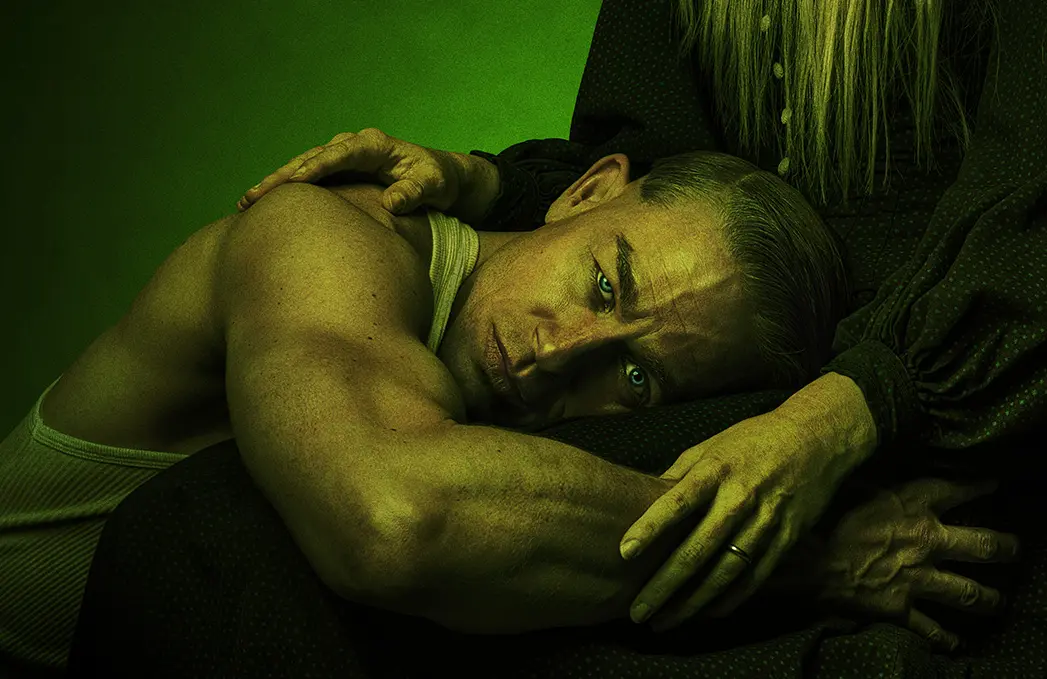What happened to Ed Gein furniture? Notorious serial killer's house of horrors explored
-
 Charlie Hunnam as Ed Gein in Netflix's Monster: The Ed Gein Story (Image via Instagram/@netflix)
Charlie Hunnam as Ed Gein in Netflix's Monster: The Ed Gein Story (Image via Instagram/@netflix)When law enforcement authorities arrived at Ed Gein’s home in Plainfield, Wisconsin on November 16, 1957, they found what would later become one of the most notorious crime scenes ever documented in American history. The horror story will be shown in Netflix’s upcoming Monster: The Ed Gein Story.
An introverted handyman who would receive the nickname the "Butcher of Plainfield," Gein had refined his home into a grotesque place of human remains. Any household items or furniture painstakingly made from human body parts horrified investigators and later influenced many horror stories in film and literature.
Within the house, law enforcement discovered Bernice Worden, the owner of the hardware store, who Gein had killed that day, and a body suspended from a hook in the shed, but the details inside the house revealed the full scope of Gein's activities.
According to Distractify, the authorities found chairs decorated with human skin, bowls made of skulls, a belt made of nipples, masks made of flayed faces, and a lampshade made from skin from a human body. There were also boxes with bodies, bodily organs, and bodily parts and a woman's suit made from skin from a woman.
Gein acknowledged that quite a few of these things did not come from murder victims but were taken from, or used in connection with bodies he had dug up from local graveyards, between 1947 and 1952. Nevertheless, the artifacts created a chilling portrait of an individual partaking in grave robbery, necrophilia, and murder.
What happened to Ed Gein’s home and its contents?
Soon after Gein was arrested, his property became a tourist destination, to which individuals traveled from far and wide to see the farmhouse. Many would stand outside the farmhouse, eager to see the person who repulsed the entire country.
In March 1958, the Gein farmhouse burned down in a questionable fire prior to going to auction. Some speculated it was deliberately started by locals hellbent on eliminating any memory of the crimes while others thought it was just an accident. Regardless, the house’s demolition assured that the home would never again be a sideshow for public consumption.
Crime scene photos from 1957 show police uncovering horrors inside Ed Gein’s farmhouse — masks, lamps, and bowls made from human skin, even furniture padded with body parts.
— Tortured History (@TorturedHistory) September 26, 2025
Netflix’s upcoming 'Monster: The Ed Gein Story' revisits the case that inspired Psycho, The Texas Chain… pic.twitter.com/DxcFXlqJ5ZWith regards to furniture and objects made by Ed Gein, most of that was destroyed by law enforcement after taking photos and logging the items as evidence.
Officials were concerned that morbid collectors, or carnival moves, would have kept this stuff and many folks in the area felt this should not count as trophies.
Only a few items, including pictures from the scene and police reports have been archived or displayed in the true crime history museums. The home and possessions may have been lost long ago, but their cultural relevance lives on.
Ed Gein's actions led to the creation of tortured fictional characters such as Norman Bates in Psycho, Leather Face in The Texas Chainsaw Massacre, and Buffalo Bill in The Silence of the Lambs. These stories turned the horror genre from fear of supernatural monsters to killers who were inspired from real life.
TOPICS: Human Interest, Bernice Worden, Butcher of Plainfield, Ed Gein, Psycho, The Silence of the Lambs, The Texas Chainsaw Massacre, Wisconsin
- What did Marjorie Taylor Greene reveal about GOP Fear of Trump in her first interview since announcing her exit?
- Who is Crystal Wilsey? Cinnabon racist employee controversy explained as alleged mugshot and arrest history goes viral online
- What sparked Trump’s latest comments on Jimmy Kimmel at the Kennedy Center event?
- Who is David Del Rio’s wife? Family explored as actor reappears in new post since allegations